Abstract
1. The effect of histidine and cysteine on the initial rate of zinc influx into rat and human erythrocytes in the presence of bovine serum albumin has been investigated. 2. The L-enantiomers of both amino acids promoted zinc influx into rat erythrocytes in a dose-dependent manner. L-Histidine, but not L-cysteine, also promoted zinc uptake into human erythrocytes. D-Histidine did not promote zinc uptake in either rat or human erythrocytes. In rat erythrocytes D-cysteine was significantly less effective than L-cysteine. 3. The stimulation of zinc influx into rat erythrocytes by 20 mM L-histidine was approximately 4.1 times that seen with human erythrocytes. 4. The influx of zinc in the presence of varying concentrations of L-histidine was linearly related to the calculated concentration of the zinc-bis-histidine complex but not to that of the zinc-mono-histidine complex or the free ionic zinc concentration. 5. These results are discussed in relation to the nature of the transport mechanisms involved.
Full text
PDF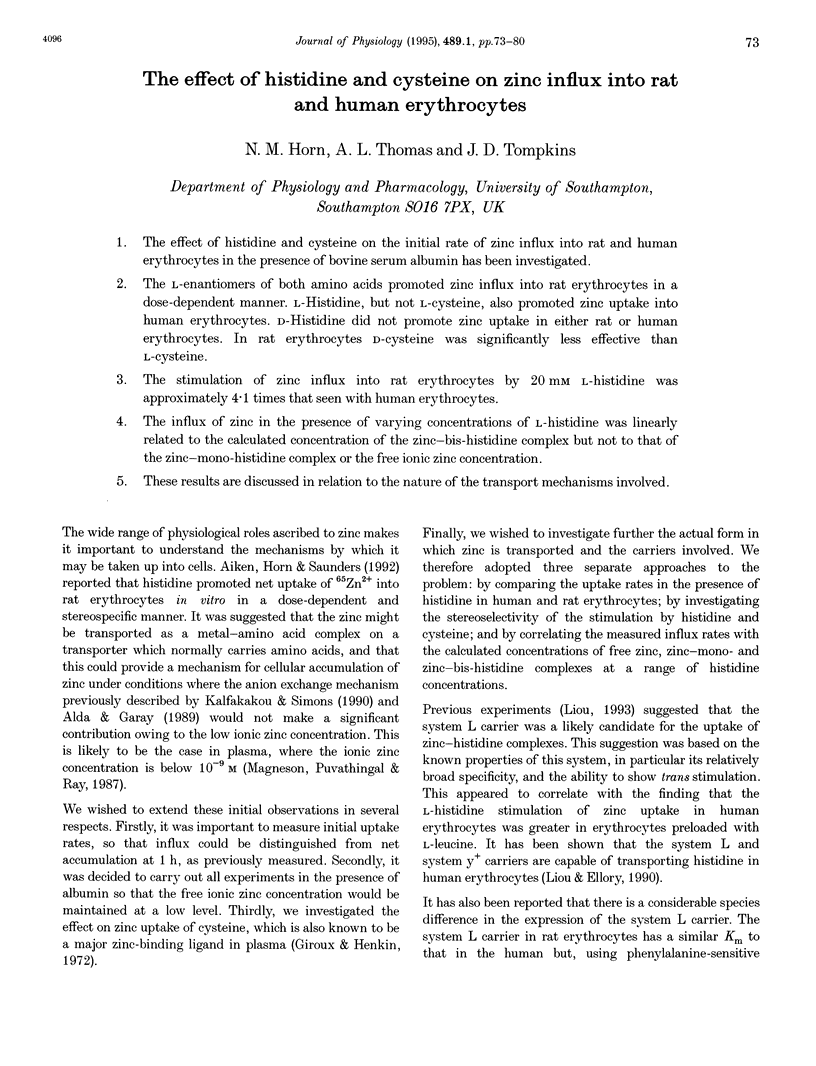
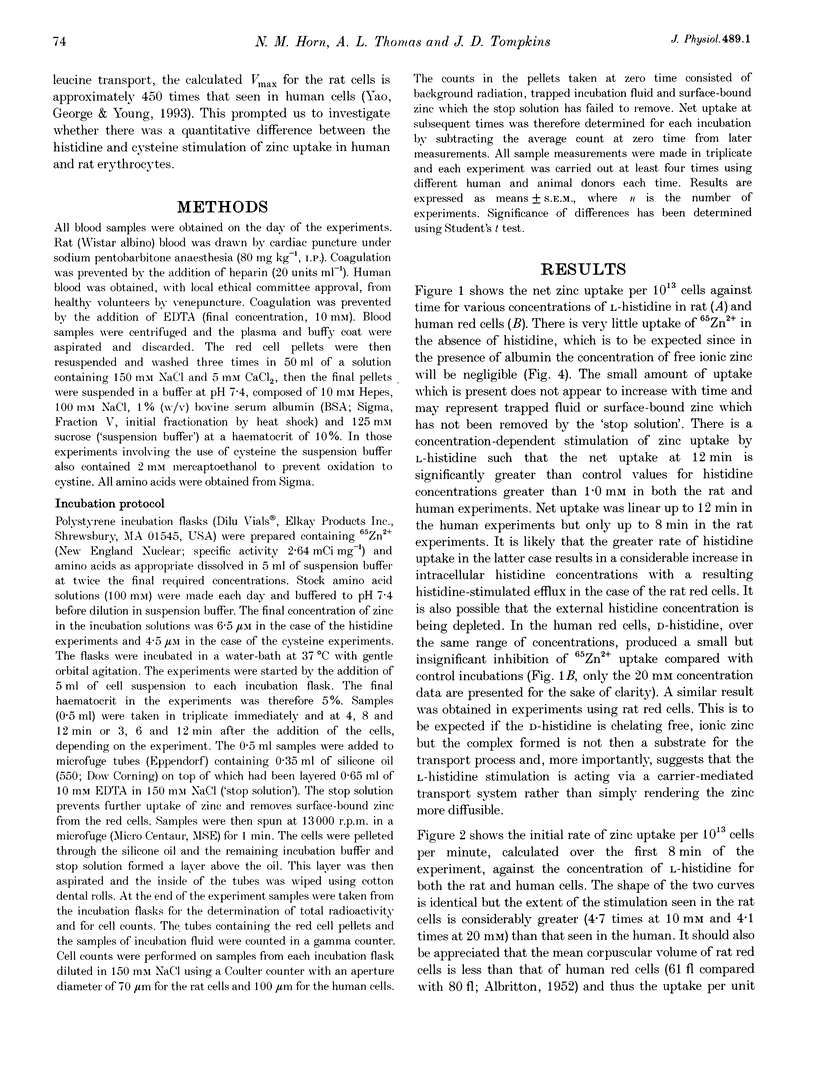
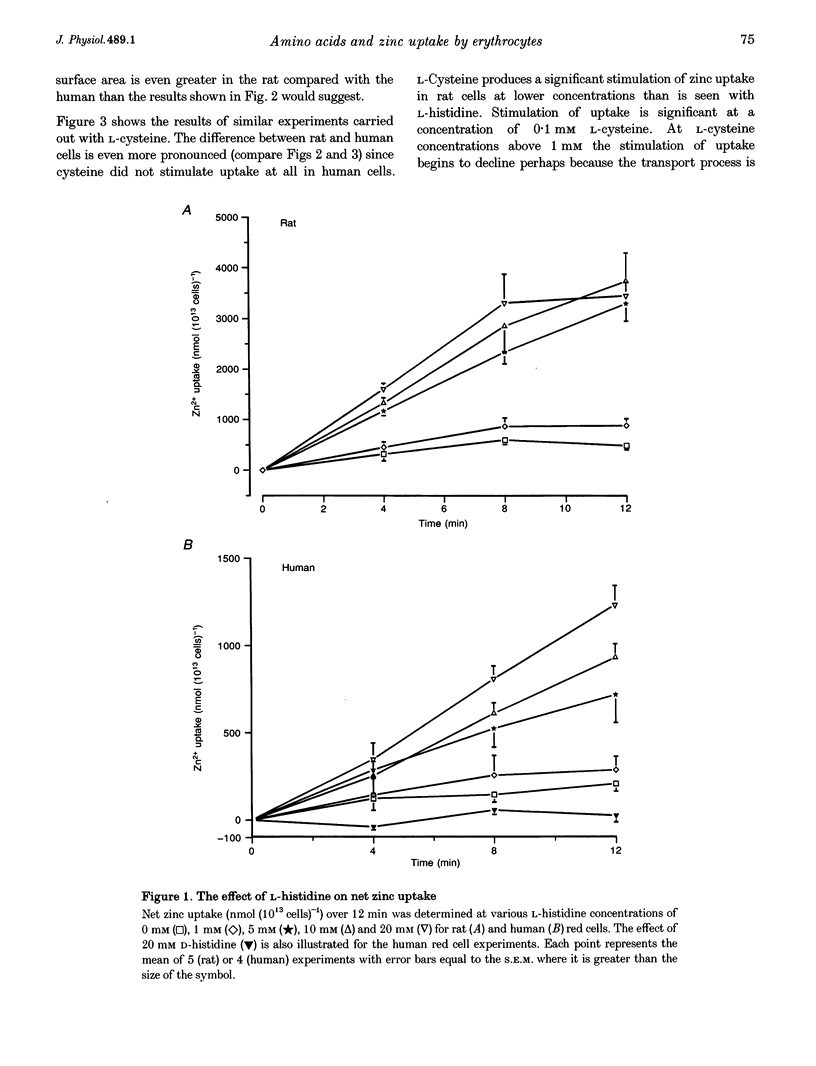
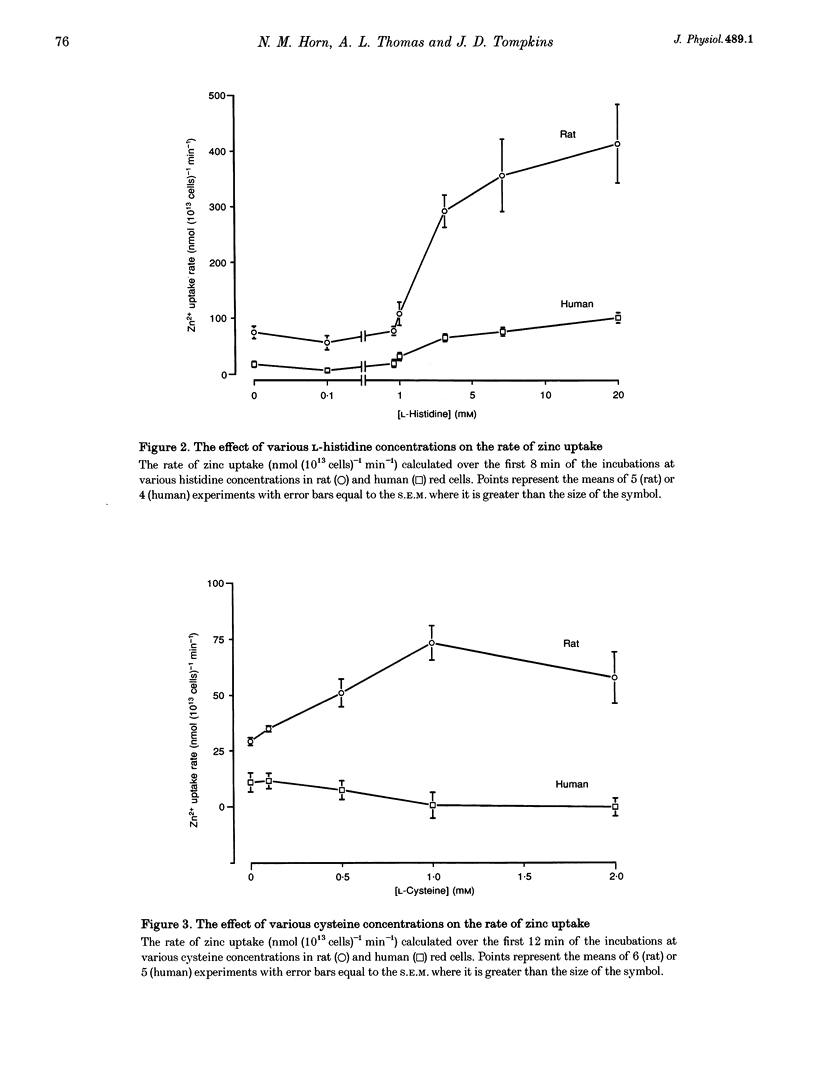
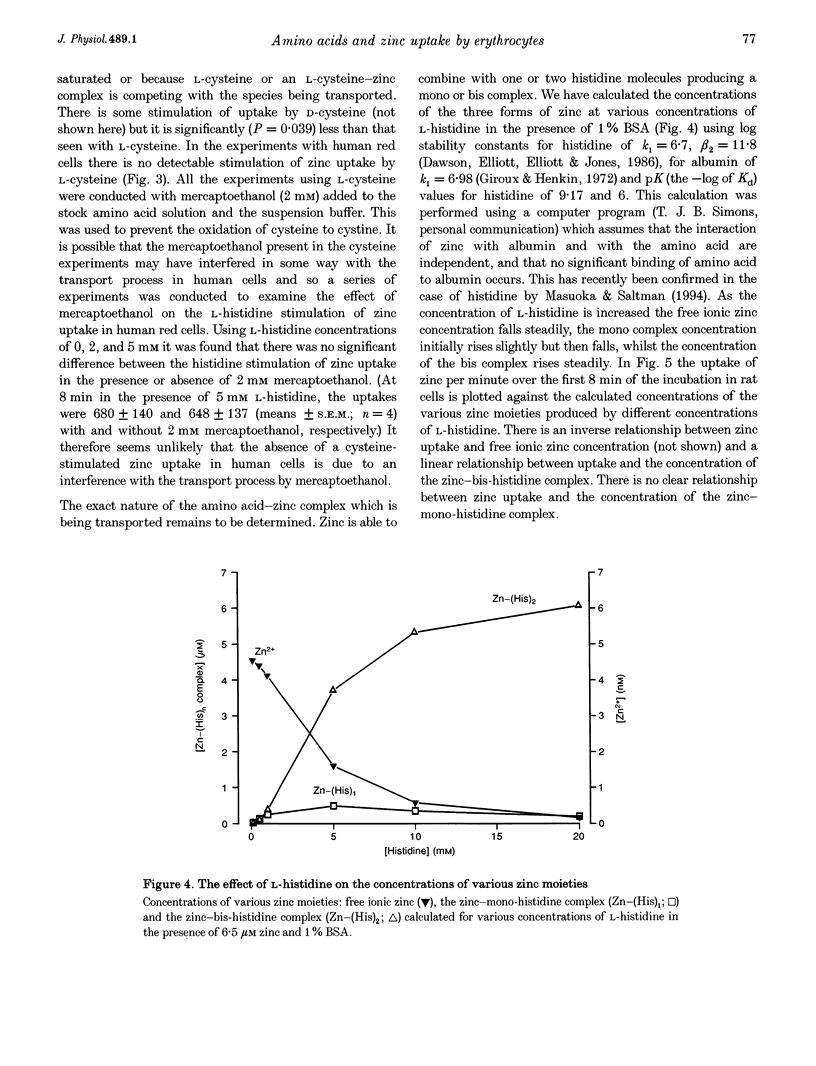
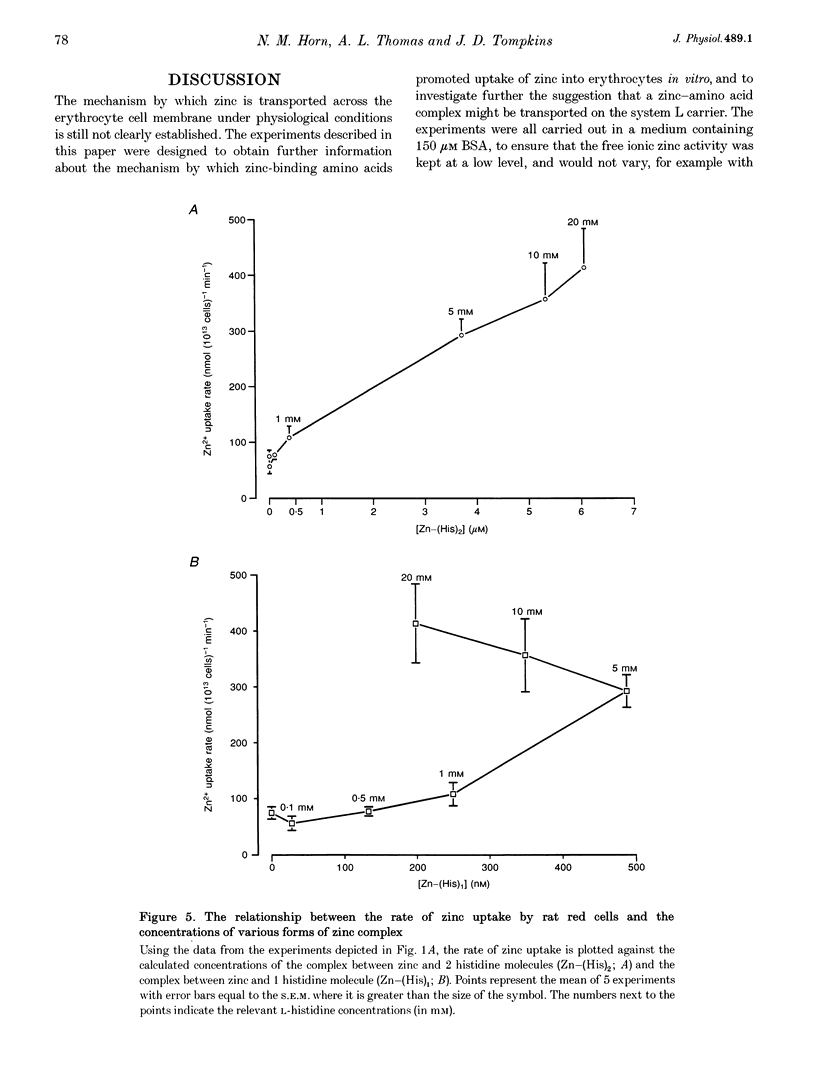
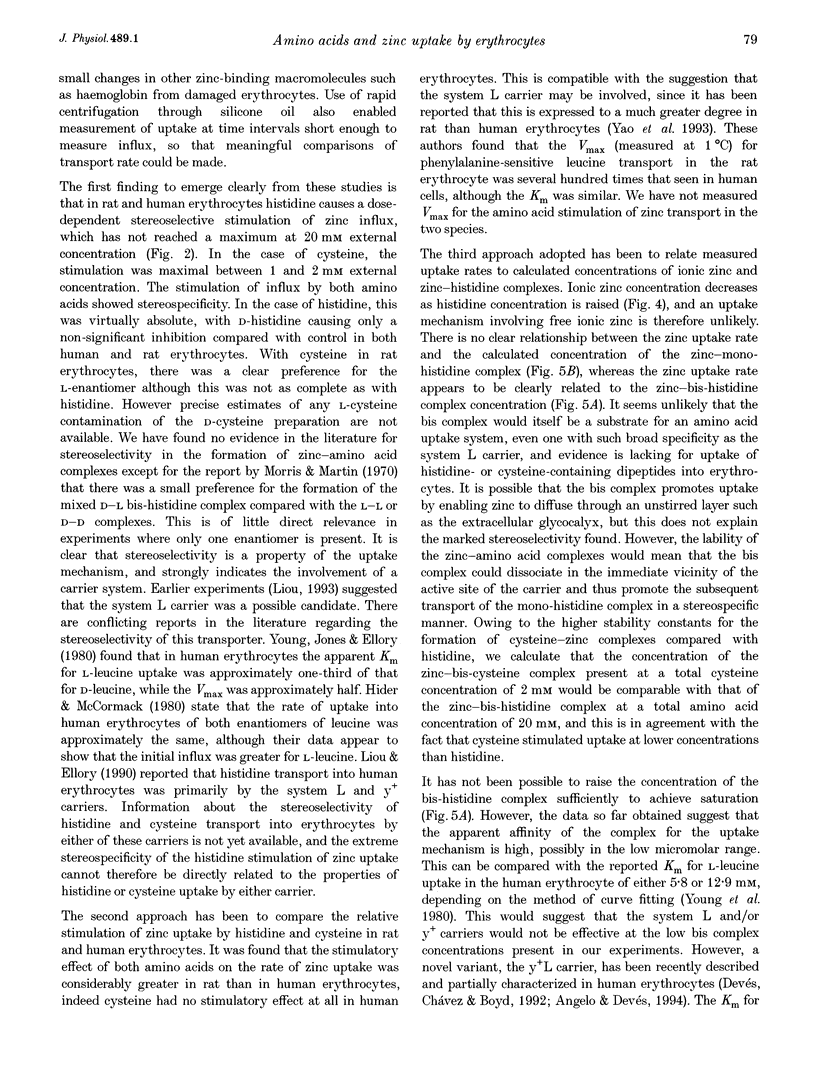
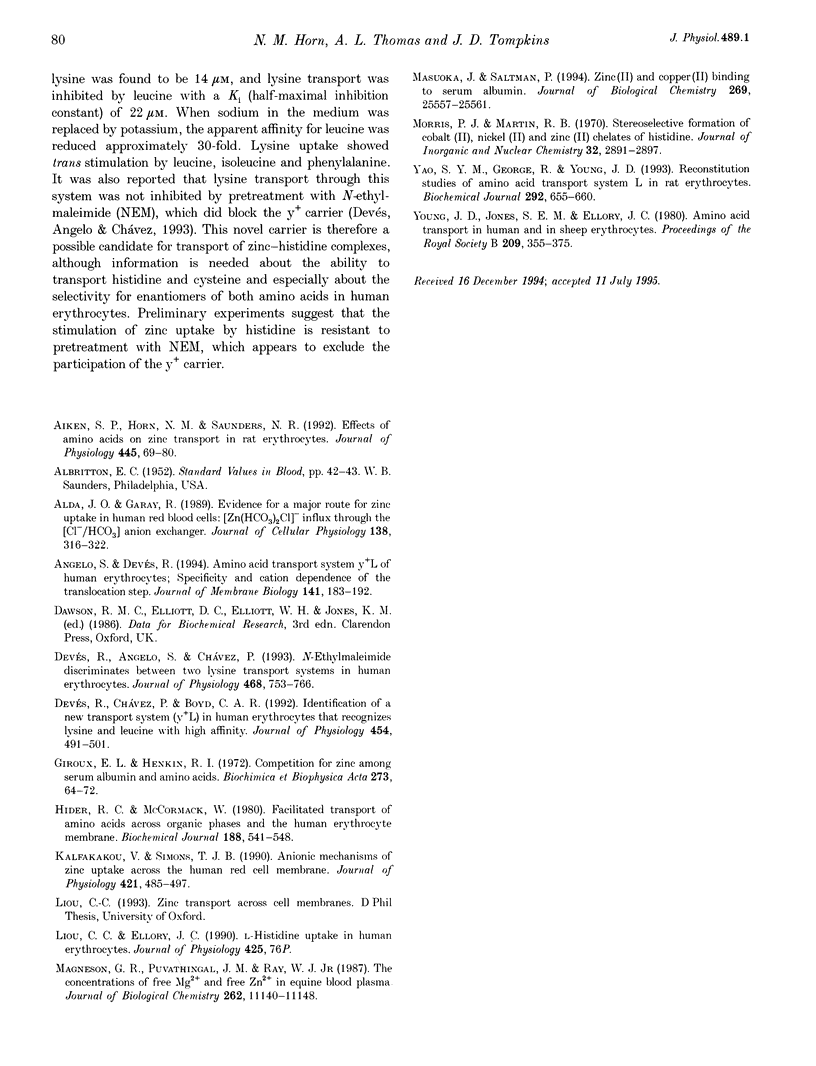
Selected References
These references are in PubMed. This may not be the complete list of references from this article.
- Aiken S. P., Horn N. M., Saunders N. R. Effects of amino acids on zinc transport in rat erythrocytes. J Physiol. 1992 Jan;445:69–80. doi: 10.1113/jphysiol.1992.sp018912. [DOI] [PMC free article] [PubMed] [Google Scholar]
- Angelo S., Devés R. Amino acid transport system y+L of human erythrocytes: specificity and cation dependence of the translocation step. J Membr Biol. 1994 Aug;141(2):183–192. doi: 10.1007/BF00238252. [DOI] [PubMed] [Google Scholar]
- Devés R., Angelo S., Chávez P. N-ethylmaleimide discriminates between two lysine transport systems in human erythrocytes. J Physiol. 1993 Aug;468:753–766. doi: 10.1113/jphysiol.1993.sp019799. [DOI] [PMC free article] [PubMed] [Google Scholar]
- Devés R., Chavez P., Boyd C. A. Identification of a new transport system (y+L) in human erythrocytes that recognizes lysine and leucine with high affinity. J Physiol. 1992 Aug;454:491–501. doi: 10.1113/jphysiol.1992.sp019275. [DOI] [PMC free article] [PubMed] [Google Scholar]
- Giroux E. L., Henkin R. I. Competition for zinc among serum albumin and amino acids. Biochim Biophys Acta. 1972 Jun 26;273(1):64–72. doi: 10.1016/0304-4165(72)90191-2. [DOI] [PubMed] [Google Scholar]
- Hider R. C., McCormack W. Facilitated transport of amino acids across organic phases and the human erythrocyte membrane. Biochem J. 1980 May 15;188(2):541–548. doi: 10.1042/bj1880541. [DOI] [PMC free article] [PubMed] [Google Scholar]
- Kalfakakou V., Simons T. J. Anionic mechanisms of zinc uptake across the human red cell membrane. J Physiol. 1990 Feb;421:485–497. doi: 10.1113/jphysiol.1990.sp017957. [DOI] [PMC free article] [PubMed] [Google Scholar]
- Magneson G. R., Puvathingal J. M., Ray W. J., Jr The concentrations of free Mg2+ and free Zn2+ in equine blood plasma. J Biol Chem. 1987 Aug 15;262(23):11140–11148. [PubMed] [Google Scholar]
- Masuoka J., Saltman P. Zinc(II) and copper(II) binding to serum albumin. A comparative study of dog, bovine, and human albumin. J Biol Chem. 1994 Oct 14;269(41):25557–25561. [PubMed] [Google Scholar]
- Torrubia J. O., Garay R. Evidence for a major route for zinc uptake in human red blood cells: [Zn(HCO3)2Cl]- influx through the [Cl-/HCO3-] anion exchanger. J Cell Physiol. 1989 Feb;138(2):316–322. doi: 10.1002/jcp.1041380214. [DOI] [PubMed] [Google Scholar]
- Yao S. Y., George R., Young J. D. Reconstitution studies of amino acid transport system L in rat erythrocytes. Biochem J. 1993 Jun 15;292(Pt 3):655–660. doi: 10.1042/bj2920655. [DOI] [PMC free article] [PubMed] [Google Scholar]
- Young J. D., Jones S. E., Ellory J. C. Amino acid transport in human and in sheep erythrocytes. Proc R Soc Lond B Biol Sci. 1980 Sep 26;209(1176):355–375. doi: 10.1098/rspb.1980.0100. [DOI] [PubMed] [Google Scholar]


